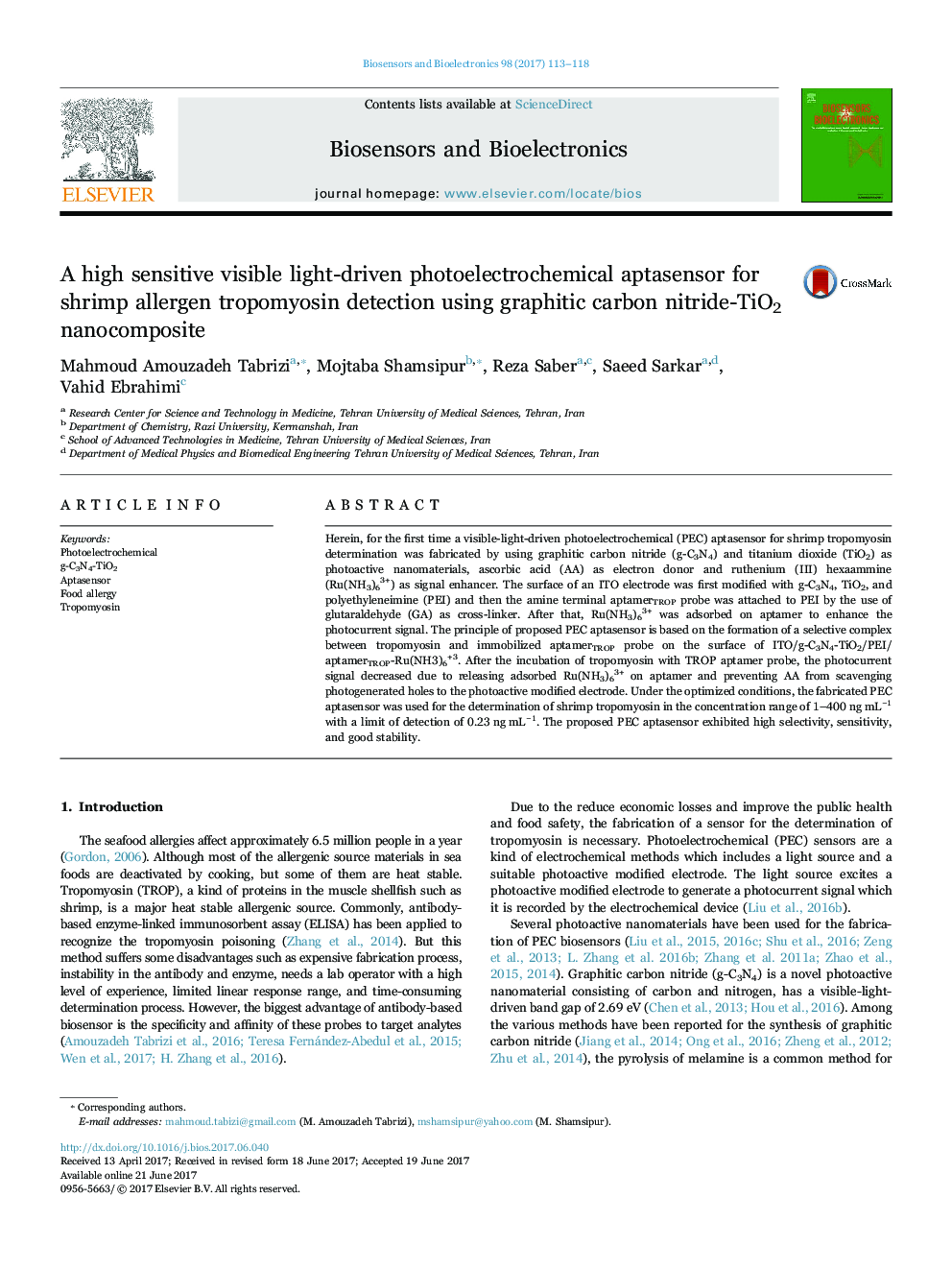| کد مقاله | کد نشریه | سال انتشار | مقاله انگلیسی | نسخه تمام متن |
|---|---|---|---|---|
| 5030905 | 1470934 | 2017 | 6 صفحه PDF | دانلود رایگان |
- This is the first report of visible-light-driven photoelectrochemical aptasensor for tropomyosin determination.
- The graphitic carbon nitride/TiO2 nanocomposite was used as a photoactive nanomaterial.
- The determination of tropomyosin up to 400 ng mLâ1 with a limit of detection of 0.23 ng mLâ1, respectively.
Herein, for the first time a visible-light-driven photoelectrochemical (PEC) aptasensor for shrimp tropomyosin determination was fabricated by using graphitic carbon nitride (g-C3N4) and titanium dioxide (TiO2) as photoactive nanomaterials, ascorbic acid (AA) as electron donor and ruthenium (III) hexaammine (Ru(NH3)63+) as signal enhancer. The surface of an ITO electrode was first modified with g-C3N4, TiO2, and polyethyleneimine (PEI) and then the amine terminal aptamerTROP probe was attached to PEI by the use of glutaraldehyde (GA) as cross-linker. After that, Ru(NH3)63+ was adsorbed on aptamer to enhance the photocurrent signal. The principle of proposed PEC aptasensor is based on the formation of a selective complex between tropomyosin and immobilized aptamerTROP probe on the surface of ITO/g-C3N4-TiO2/PEI/aptamerTROP-Ru(NH3)6+3. After the incubation of tropomyosin with TROP aptamer probe, the photocurrent signal decreased due to releasing adsorbed Ru(NH3)63+ on aptamer and preventing AA from scavenging photogenerated holes to the photoactive modified electrode. Under the optimized conditions, the fabricated PEC aptasensor was used for the determination of shrimp tropomyosin in the concentration range of 1-400 ng mLâ1 with a limit of detection of 0.23 ng mLâ1. The proposed PEC aptasensor exhibited high selectivity, sensitivity, and good stability.
209
Journal: Biosensors and Bioelectronics - Volume 98, 15 December 2017, Pages 113-118
